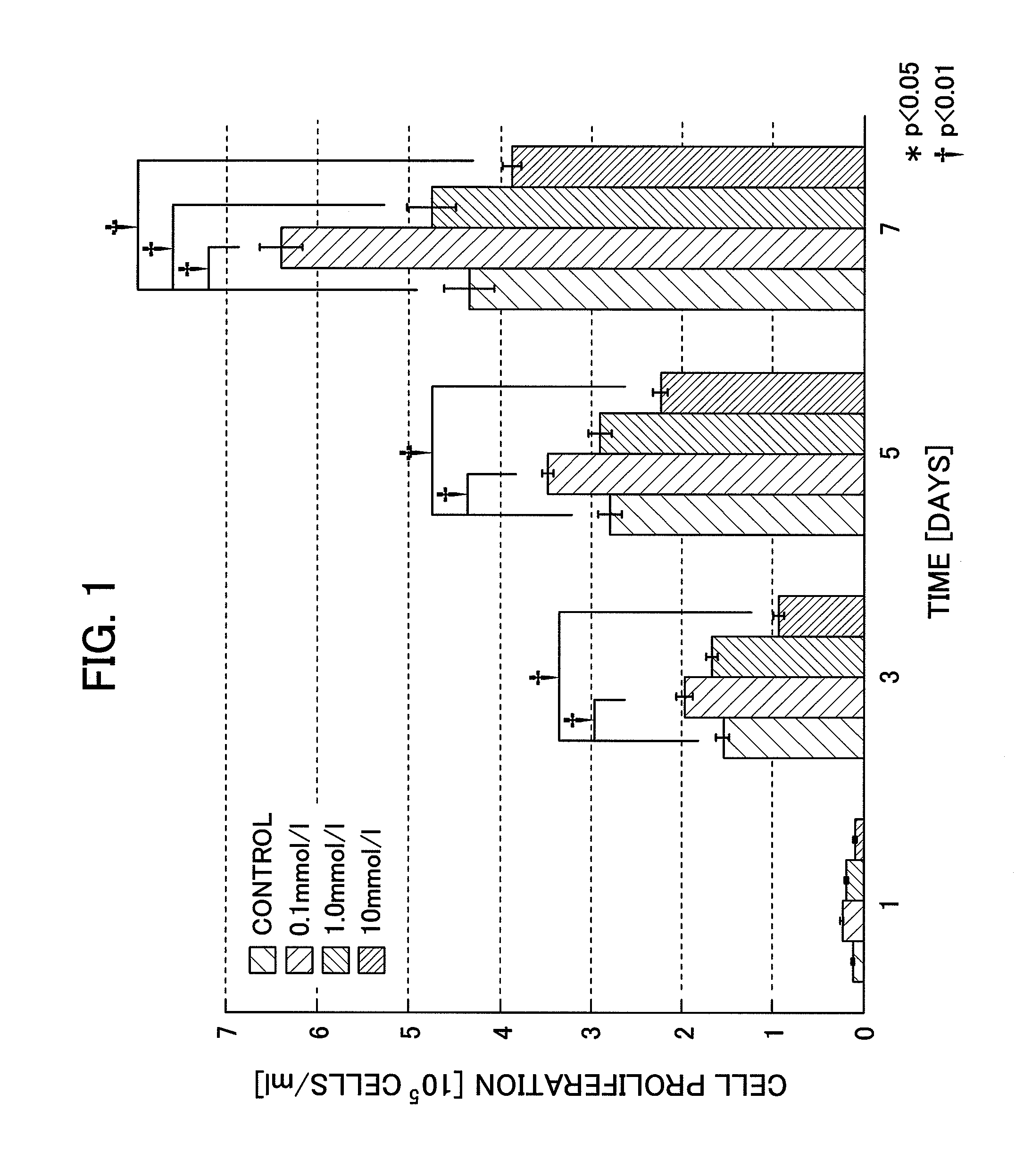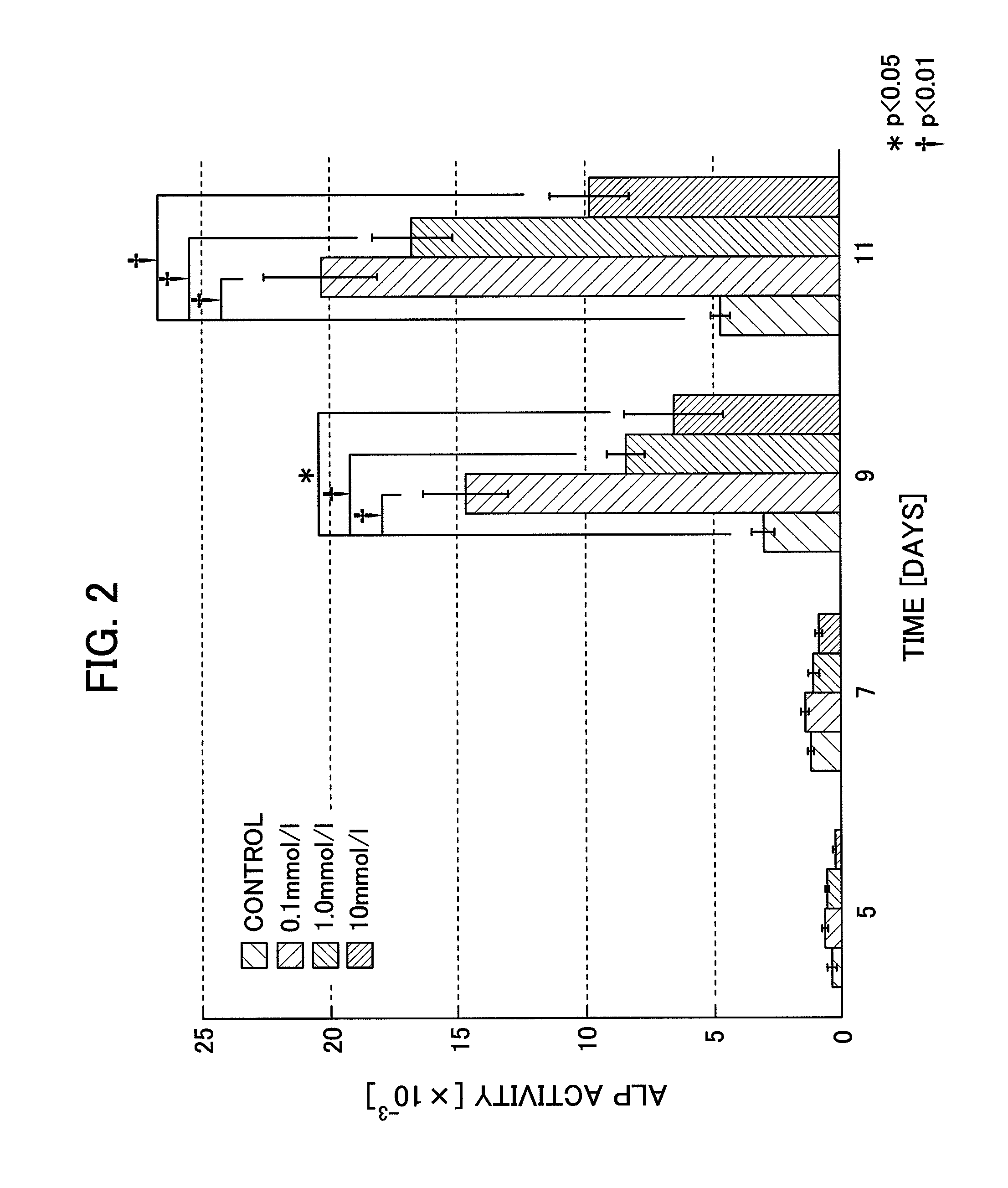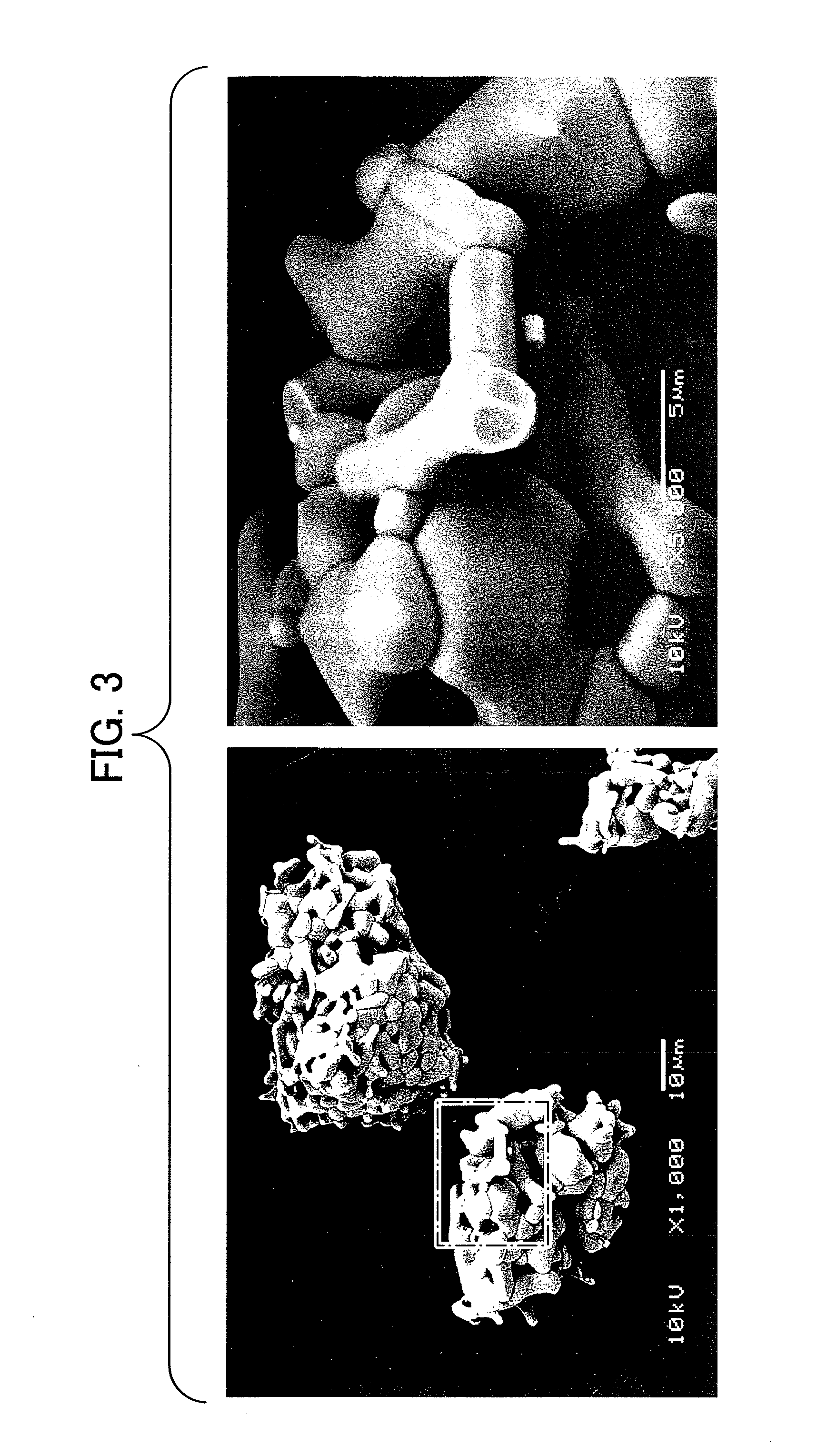Bone filling material comprising sintered titanium dioxide and dextrin and method for reconstructing bone defects using the same
a bone defect and titanium dioxide technology, applied in the field of bone filling materials comprising sintered titanium dioxide and dextrin and bone defect reconstruction methods, can solve the problems of limited amount of collected bone grafts, material leekout from the filled regions, and difficulty in keeping materials retained in the bone defect regions for a certain period of tim
- Summary
- Abstract
- Description
- Claims
- Application Information
AI Technical Summary
Benefits of technology
Problems solved by technology
Method used
Image
Examples
example 1
[0044]Effects of Dextrin on Mouse Osteoblast-Like Cells (Biocompatibility Test) If dextrin is administered or implanted in the body as an implant material, it is essential for the dextrin to have good biocompatibility with the body tissues. Assuming that dextrin is implanted in the body, effects of dextrin on mouse osteoblast-like cells were examined in vitro.
(1) Materials:
[0045]Dextrin having weight average molecular weight of 2,000 (Matsutani Chemical Industry Co., Ltd, Pinefiber (trademark)) was used in this experiment.
(2) Cell proliferation Test
[0046]MC3T3-E1 derived from mouse osteoblast-like cells has been widely used in researches as a cell which proliferates, differentiates and calcifies to reflect bone formation process in the body similar to bone cells in the body.
[0047]For this reason, also in this experiment, MC3T3-E1 (Dainippon Sumitomo Pharma Co., Ltd.) derived from mouse osteoblast-like cells was used for cell proliferation test.
[0048]A medium was prepared by adding 1...
example 2
[0066]Bone filling evaluation of sintered titanium dioxide-dextrin complex
(1) Preparation of Sintered Titanium Dioxide
[0067]As titanium dioxide, titanium dioxide powder (Ishihara Sangyo Kaisha Ltd. FTL-100) having average particle width of 0.3 μm and average particle length of 5.0 μm was used. The sample was heated in an electric furnace (Koyo Thermo System Co., Ltd., LP-907) from room temperature to 100° C. in 30 minutes to dry the sample, which was then heated to a given sintering temperature in 120 minutes to sinter the sample. Sintering was conducted under atmospheric condition at 1400° C. After the sample was kept in the furnace at the given temperature for 30 minutes, it was cooled in the furnace and used for the experiments. The sample was sterilized in an autoclave at 120° C. for 15 minutes.
[0068](2) Observation of the Surface Texture of Sintered Titanium Dioxide Sintered titanium dioxide was observed for particle size, the surface texture and morphology under a scanning ele...
PUM
| Property | Measurement | Unit |
|---|---|---|
| diameter | aaaaa | aaaaa |
| diameter | aaaaa | aaaaa |
| particle length | aaaaa | aaaaa |
Abstract
Description
Claims
Application Information
 Login to View More
Login to View More - R&D
- Intellectual Property
- Life Sciences
- Materials
- Tech Scout
- Unparalleled Data Quality
- Higher Quality Content
- 60% Fewer Hallucinations
Browse by: Latest US Patents, China's latest patents, Technical Efficacy Thesaurus, Application Domain, Technology Topic, Popular Technical Reports.
© 2025 PatSnap. All rights reserved.Legal|Privacy policy|Modern Slavery Act Transparency Statement|Sitemap|About US| Contact US: help@patsnap.com



